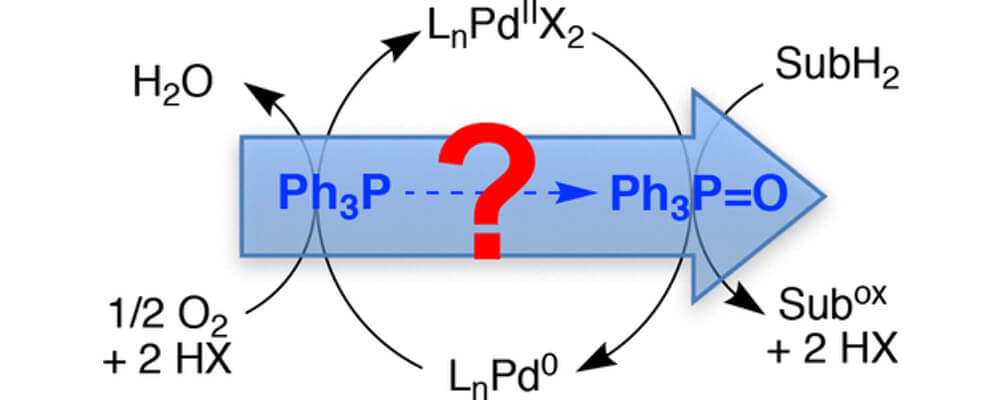Are Phosphines Viable Ligands for Pd-Catalyzed Aerobic Oxidation Reactions? Contrasting Insights from a Survey of Six Reactions
Stephen J. Tereniak, Clark R. Landis, and Shannon S. Stahl
ACS Catalysis,
2018, 8 (4), pp 3708–3714; DOI:10.1021/acscatal.8b01009

03/2018
Phosphines are the broadest and most important class of ligands in homogeneous catalysis, but they are typically avoided in Pd-catalyzed aerobic oxidation reactions because of their susceptibility to oxidative degradation. Six different aerobic oxidative coupling reactions that use phosphine ligands were assessed. The fate and role of the phosphine, analyzed by 31P NMR spectroscopy throughout the reaction time course in each case, varies in different reactions.
In some cases, the phosphine ligands inhibit catalysis, while in other cases they have beneficial effect on the reaction but undergo oxidative decomposition in parallel with productive catalytic turnover. Inclusion of MnO2 in one of the reactions slows phosphine oxidation by catalyzing disproportionation of H2O2 and thereby supports productive catalytic turnover. In another case, negligible oxidation of the chiral phosphine (S,S)-chiraphos is observed, due to strong chelation of the ligand to PdII. The results of this study suggest that phosphines warrant broader attention as ligands for Pd-catalyzed aerobic oxidation reactions, particularly by implementing strategies identified for ligand stabilization.